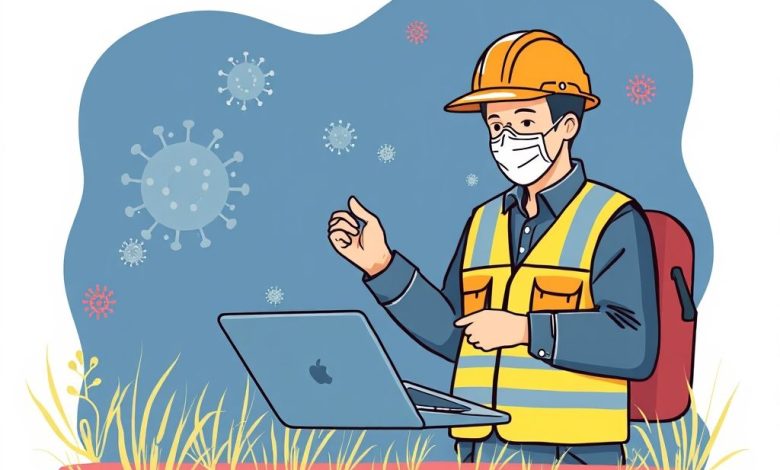Field Service Management with COVID Safety Protocols Ensuring Worker Safety in the Age of Pandemics

Introduction
Field Service Management (FSM) refers to the process of managing and coordinating work orders, scheduling, and dispatching for field-based services. With the onset of the COVID-19 pandemic, FSM companies have had to adapt their operations to ensure both customer safety and business continuity. This article explores the challenges faced by FSM companies during the pandemic and how they implemented COVID safety protocols to mitigate risks while maintaining service delivery.
The Impact of COVID-19 on Field Service Management
The COVID-19 pandemic brought unprecedented challenges to the field service industry. Many FSM companies were forced to suspend operations temporarily due to government restrictions and social distancing measures. When services resumed, there was a significant increase in demand as customers sought essential maintenance and repairs.
However, this surge in demand posed new challenges:
- Ensuring proper hygiene practices among technicians
- Maintaining safe distances between customers and technicians
- Managing potential exposure risks
- Adapting scheduling systems to accommodate new safety protocols
- Communicating effectively with customers about safety measures
Implementing COVID Safety Protocols
To address these challenges, many FSM companies implemented various COVID safety protocols. Some common measures included:
Personal Protective Equipment (PPE)
Many FSM companies invested in PPE for their technicians, including:
- Face masks
- Gloves
- Hand sanitizer
- Thermometers (for temperature checks)
Technicians were required to wear PPE during visits and maintain proper hygiene practices.
Social Distancing Measures
FSM companies implemented various social distancing measures:
- Limiting the number of technicians on site at any given time
- Maintaining safe distances between customers and technicians (typically 6 feet)
- Using virtual consultations where possible to reduce face-to-face interactions
Scheduling and Dispatch Optimization
To minimize exposure risks, FSM companies optimized their scheduling systems:
- Implementing contactless check-in processes
- Creating separate schedules for high-risk customers (e.g., elderly or immunocompromised individuals)
- Utilizing digital tools for remote diagnostics and troubleshooting
Customer Communication
Effective communication with customers was crucial during this period:
- Providing clear information about safety protocols before service appointments
- Offering flexible scheduling options to accommodate customer preferences
- Regularly updating customers on any changes to service policies due to pandemic-related restrictions
Technology Solutions for COVID Safety Protocols
Technology played a significant role in implementing and managing COVID safety protocols in FSM:
Mobile Apps
Many FSM companies developed or enhanced mobile apps to facilitate:
- Contactless check-ins
- Digital signatures for consent forms
- Remote access to customer information and appointment details
IoT Devices
Internet of Things (IoT) devices were used to monitor environmental conditions and ensure compliance with safety guidelines:
- Temperature sensors to detect potential fevers among technicians
- Air quality monitors to maintain safe indoor environments
AI-Powered Diagnostics
Artificial Intelligence (AI) was leveraged to enhance remote diagnostics and reduce physical interactions:
- Chatbots for initial triage and problem assessment
- Computer vision for visual inspections without human presence
Challenges and Opportunities
Implementing COVID safety protocols presented both challenges and opportunities for FSM companies:
Challenges
- Increased operational costs due to PPE and technology investments
- Potential delays in service delivery due to new safety procedures
- Difficulty in maintaining consistent quality of service across all locations
- Ensuring compliance with rapidly changing government regulations
Opportunities
- Enhanced reputation and trust among customers
- Improved efficiency through technology adoption
- New revenue streams from value-added services (e.g., remote diagnostics)
- Opportunity to refine business processes and improve overall service quality
Conclusion
The COVID-19 pandemic has undoubtedly changed the landscape of Field Service Management. While it posed numerous challenges, it also created opportunities for innovation and improvement. As we move forward, FSM companies will likely continue to adapt their operations to address emerging health concerns while maintaining exceptional service delivery.
The key to success lies in striking a balance between safety protocols and efficient service delivery. By leveraging technology, optimizing scheduling systems, and prioritizing customer communication, FSM companies can navigate future health crises while continuing to grow and thrive in the industry.
As field service managers, it is crucial to stay informed about the latest developments in FSM technology and safety protocols. This knowledge will enable you to make informed decisions and implement effective strategies to protect your team, customers, and business during these unprecedented times.




